6 Fixes to Resolve BSOD After System Reset in Windows
The blue screen happens when Windows encounters a critical error that stops the operating system from running. While a system reset reverts the system back to its default state, it does not get rid of hardware and driver issues that often trigger a BSOD.

In this guide, we will discuss the troubleshooting methods to try when you counter a blue screen even after resetting the system to its default state.
1. Boot Into the Recovery Environment of Windows
In the event you are faced with the BSOD every time you attempt to use the system, you will need to use the Windows Recovery Environment to get access to the OS.
A bootable Windows Recovery Environment (Windows RE) is a companion OS that is often used to fix problems that prevent the operating system from booting normally. Once in Windows RE, you can access a number of tools to troubleshoot and repair your system, such as the Command Prompt, Startup Repair, and System Restore.
In this method, we will show you how to access WinRE to proceed with the methods below.
Here is how you can proceed:
- Turn off the device by pressing and holding the power button for 10 minutes.
- Launch the system by using the power button, and then turn it off again in a similar way.
- Do this twice again and allow the system to start properly for the third time. Windows will now automatically
- boot into the recovery environment.
- In the WinRE mode, navigate to Troubleshoot > Advanced options.
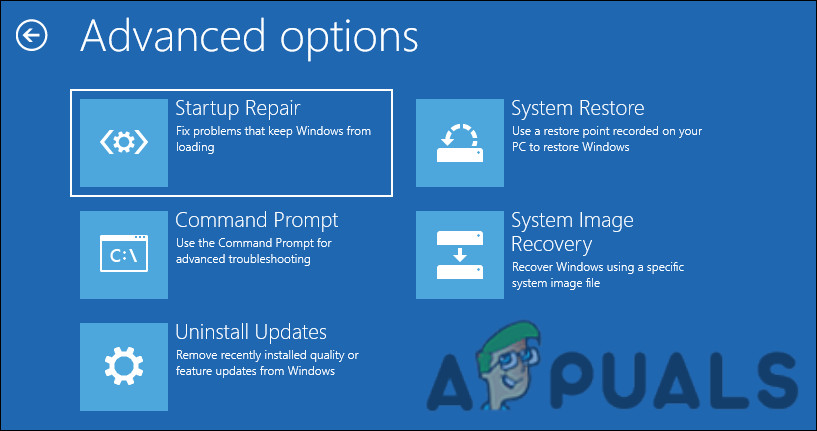
Enter the Advanced options menu
Once you are inside the Advanced options menu of the WinRE, you can access different tools to perform the troubleshooting methods we have listed below.
2. Run System Scans
The first thing that we recommend you do is run the SFC and DISM commands using the Command Prompt utility in the Advanced options menu of WinRE.
The SFC (System File Checker) command-line tool in Windows can scan all protected system files and replace any that are found to be missing or corrupted with a cached copy that is located in a compressed folder at %WinDir%\System32\dllcache.
DISM (Deployment Image Servicing and Management), on the other hand, can be used to help fix issues within Windows by repairing and preparing Windows images, including the operating system. While these tools do not specifically target Blue Screen of Death (BSOD) errors, they can help fix the issue if the cause of the problem is a missing or corrupted system file or a bad Windows image.
Here is how you can run these tools using WinRE:
- In the Advanced options screen of WinRE, choose Command Prompt.
- Now, type the following command and hit Enter to run the System File Checker:
sfc /scannow
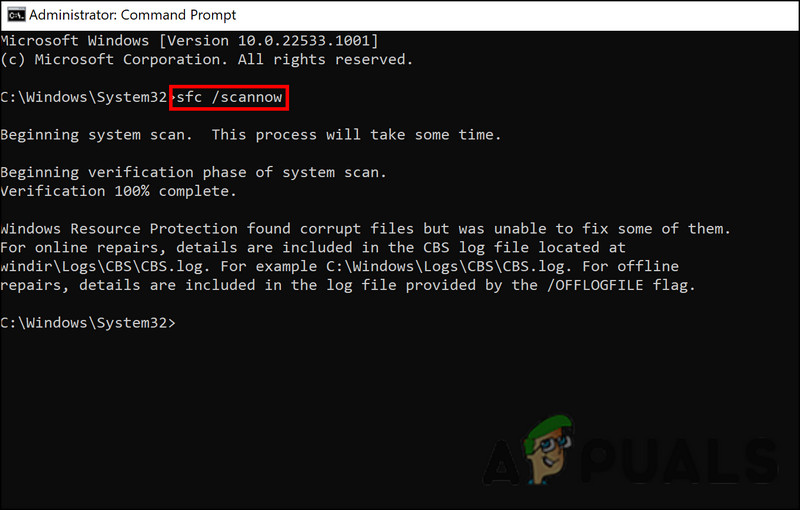
Run the System File Checker - Once the command is executed, proceed with this command:
dism /online /cleanup-image /scanhealth
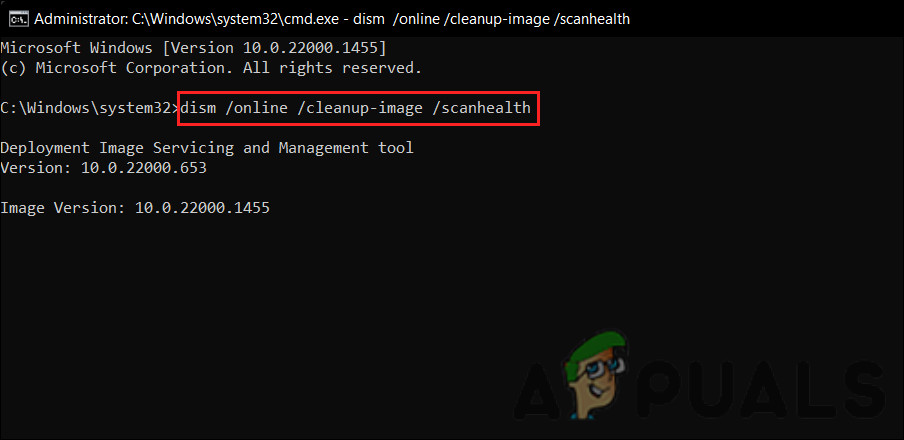
Run the scanhealth command
DISM and SFC will start scanning and fixing your operating system, which may take some time depending on your operating system size and the amount of corruption found. We also recommend running a CHKDSK scan to identify and fix any bad sectors that might be causing the issue, while you are on it.
If the error persists, move to the next method below.
3. Update Drivers
In several cases, it has been noticed that the culprit was netio.sys, which is a Windows system file that is responsible for managing network input/output operations. As a kernel-mode driver, it handles network traffic and provides network stack functionality.
If this scenario is applicable, then you can try updating the network drivers to fix the problem. We will be booting into the Safe Mode to perform this method.
Here is how you can do that:
- In the Advanced options screen of WinRE, choose Command Prompt.
- Type the following command in the Command Prompt to proceed:
bcdedit /set {default} safeboot minimal - Type exit in Command Prompt after the command executes to close the window.
- Now, restart your computer. Upon reboot, the Safe Mode will automatically.
- Inside the Safe Mode, type Device Manager in the search area of the taskbar and click Open.
- Expand the Network Adapters section and right-click on your network driver.
- Choose Update driver from the context menu and then click on Search automatically for drivers.
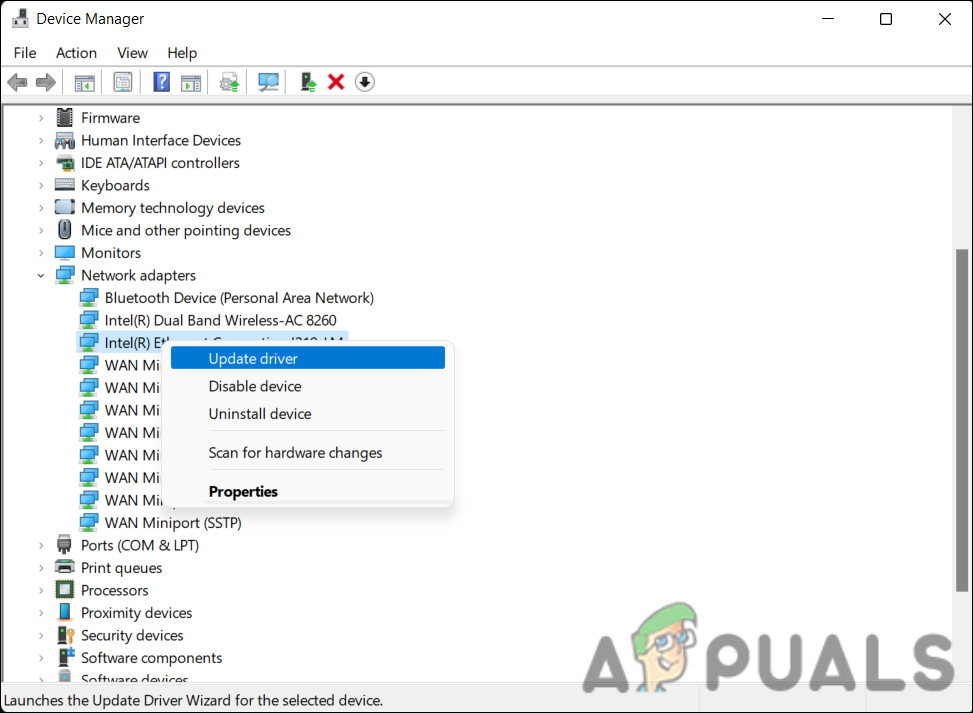
Update the network driver - Follow the on-screen instructions to update the driver and then restart your computer.
- Upon reboot, the computer will boot into the normal state. Check if the error appears again.
Another thing that you can try is temporarily disabling the antivirus program and checking if that makes any difference. In the event of an antivirus program that scans all running processes or if it has a bug that interferes with other programs, it might interrupt Windows network processes, causing the problem at hand.
4. Run Memory Diagnostic Tool
There is also a possibility that Random Access Memory (RAM) is causing the Blue Screen of Death (BSOD) on your computer. RAM is used by computers to temporarily store data that is being used by programs and operating systems. If there is a problem with the RAM, such as a malfunctioning module or a configuration issue, it can cause the computer to crash and display a BSOD.
If this scenario is applicable, you can try running the Memory Diagnostic Tool to identify issues within the RAM.
The tool creates a bootable media (CD or USB) and then restarts the computer with it. Upon restarting, the computer will start the Memory Diagnostic Tool, which will test the memory. The memory is tested twice, once in basic mode (a quick check) and once in standard mode (a more detailed check).
If errors are found, the tool will provide a report that will indicate whether or not the memory module(s) need to be replaced.
To access the memory diagnostic tool in Windows:
- Press the Win + S keys together to open the Windows Search tab.
- Type Windows Memory Diagnostic in the search area and hit Open.
- Select Restart now and check for problems (recommended) to run the memory diagnostic tool as soon as the computer restarts. It will run and provide a report on any memory errors found.
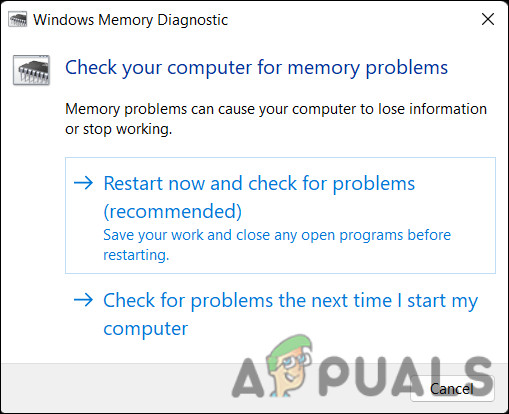
Run the Windows Memory Diagnostic tool
Using the Memory Diagnostic Tool will not resolve the issues found in the memory, it will only diagnose them, and you must replace any faulty RAM modules that are identified by the tool.
5. Revert the Recently Made Changes
Blue Screen of Death (BSOD) can occur when you make a recent software change, such as installing a new program or updating an existing one. This is because software changes can introduce conflicts or errors that can cause the operating system to crash.
If you started facing the issue after installing a new program or update on the system, then try uninstalling it.
Here is how you can uninstall a program on Windows:
- Boot the computer into Safe Mode by following the steps we have described earlier.
- Once in Safe Mode, press the Win + R keys together to open a Run dialog.
- Type control in the text field of Run and click Enter.
- Click on Uninstall a program under the Programs section.
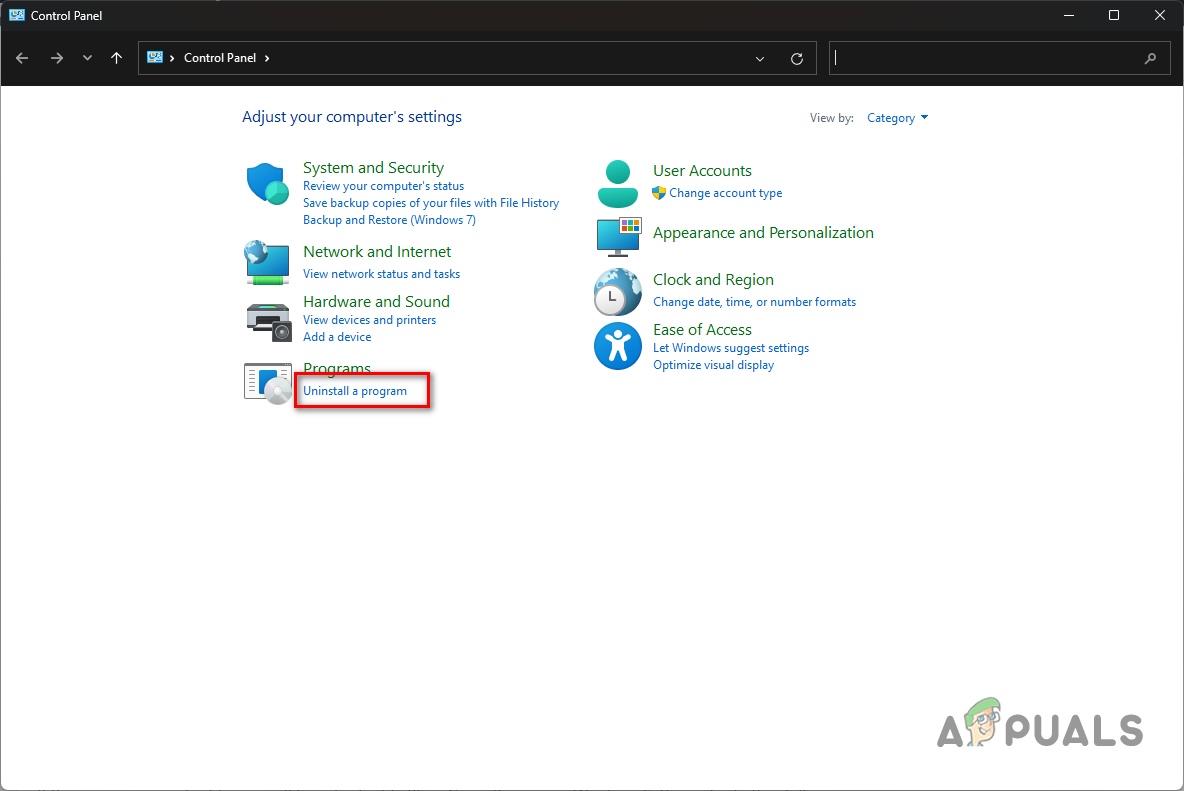
Choose Uninstall a Program - You should now see a list of all the programs installed on your computer. Identify the problematic one and right-click on it.
- Choose Uninstall and follow the on-screen instructions to proceed with the uninstallation.
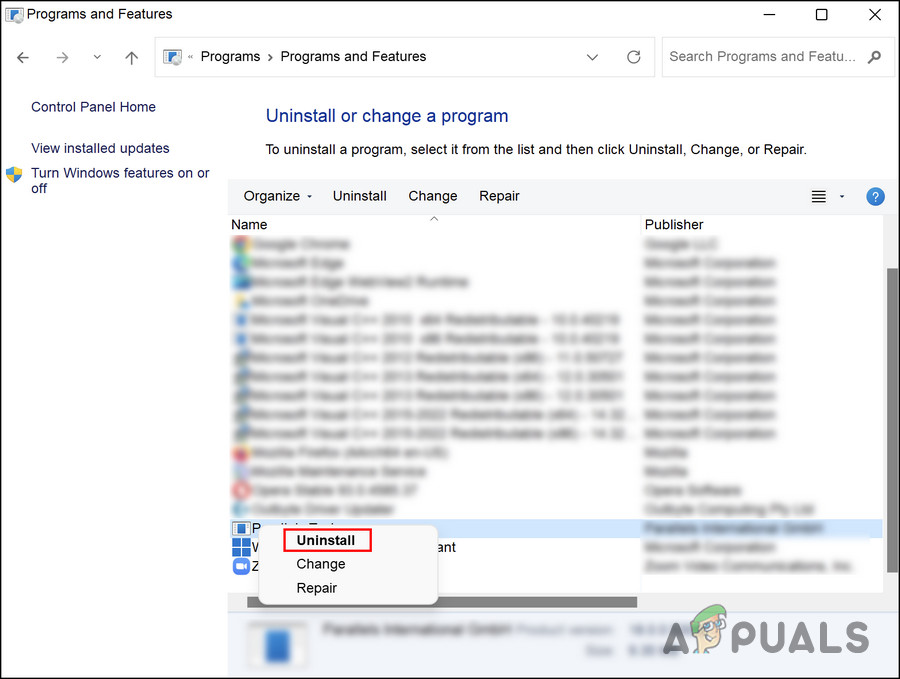
Uninstall the conflicting program
If an update is causing the problem, then follow these steps:
- Follow steps 1-4 from above.
- Choose View installed updates from the left pane.
- Now, identify the problematic update from the list of options available and choose Uninstall.
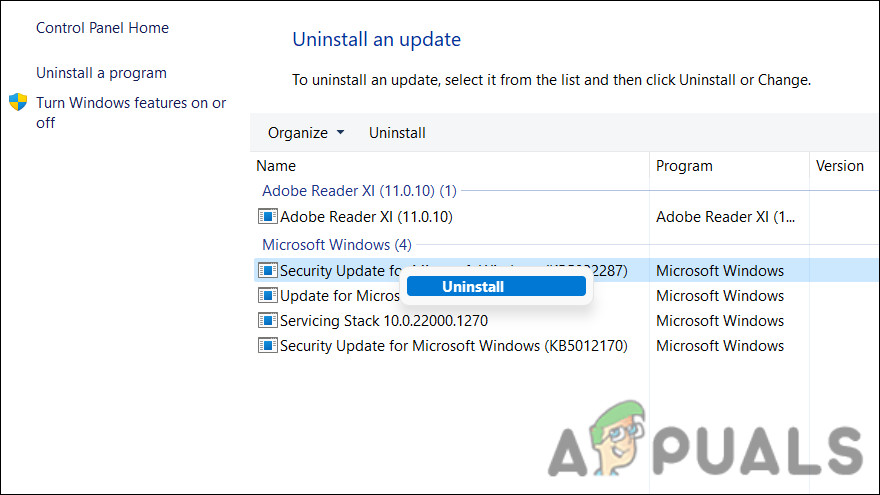
Uninstall the update - Follow the on-screen instructions to proceed.
- Alternatively, you can click on the Command Prompt option in the Advanced options window.
- Once you are at the Command Prompt, execute the following command by replacing the <Update_KB_Number> with the KB number of the update you want to remove.
wusa /uninstall /kb:<Update_KB_Number>
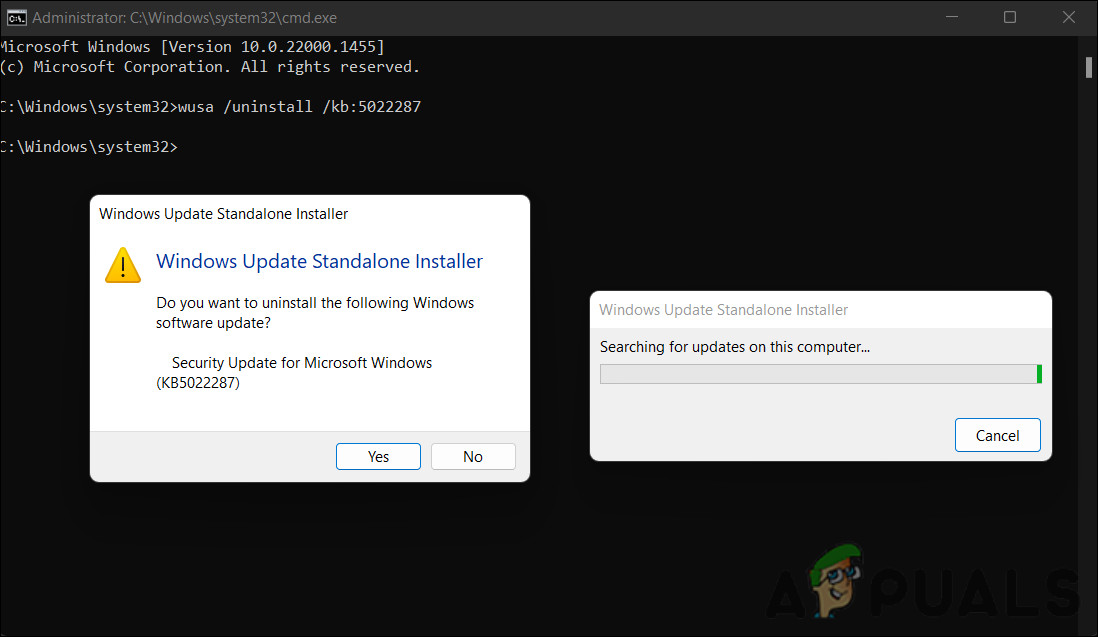
Uninstall the update - Press Enter to begin uninstalling the update and confirm your action. You will receive a message once the uninstall has been completed.
Hopefully, this will fix the BSOD problem for you.
6. Perform a Clean Install
If none of the methods above prove to be effective, then you can try performing a clean install of Windows.
During a clean install of Windows on a computer, all the existing data, settings, and programs are deleted, and a new copy of the operating system is installed. The clean install will wipe all personal files, programs and apps installed on the computer, as well as any software that was downloaded from the internet.
In most cases, a clean installation is only used as a last resort when other methods have failed or a user wants to start fresh with a clean copy of Windows. You can use it to fix problems caused by malware, system file corruption, or hardware failures.





